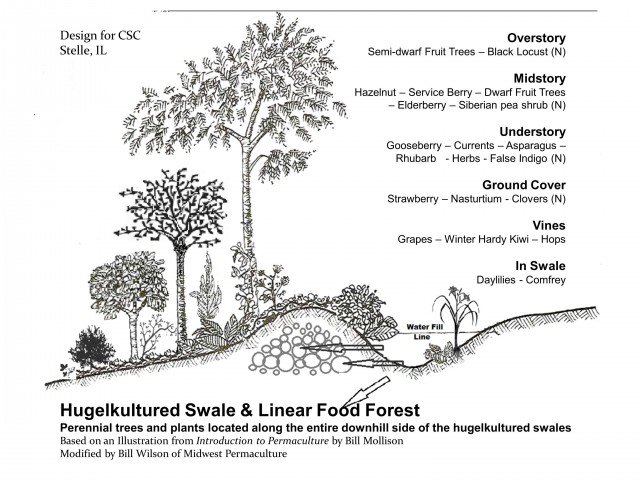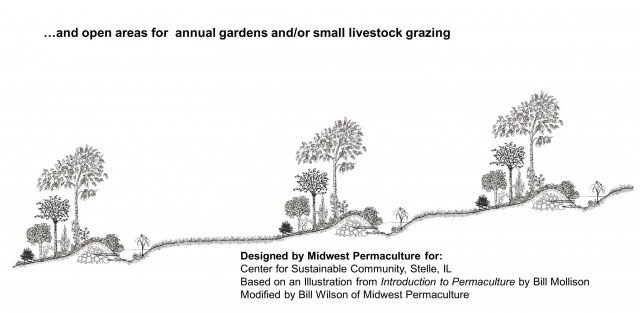Discover the Wild Leek (Ramps)
Learn how the influence of ramps has built relationships within
Learn how the influence of ramps has built relationships within
What is a composting toilet? A composting toilet is a
Here is the latest presentation and virtual tour of how
Spring is here at Midwest Permaculture. It’s time for the
In this design we will be planting linear-food forests all along the downhill side of each of three hugelkultured swales.
What is a hugelkultured swale?


Please Note: WARNING!
Log Slides
Scale is an important consideration when designing. If one builds a large swale system, with big logs — and a deep swale — on a steep slope — there is the potential that when the swales fill during a large rain event, the water could literally lift the logs right out of the ground (many logs do float in water) and send them down the slope. Our friend Jack Spirko wrote a good article for the PRI website on this exact point.
Mud Slides
We cover this in our PDC courses but wish to make a clear point here as well. On reasonably steep slopes where there were once deep rooted trees, the soil built up over centuries with the trees anchoring the top layers of soil to the bedrock or more solid substrate below. In heavy or prolonged rain events, even though the topsoil becomes saturated, lubricated and heavy, it stayed in place because of the deep rooted trees. When people arrived and remove trees for either subdivisions or to make the land more ‘agriculturally productive’ the deep roots slowly rot away and now there is nothing to hold saturated soils to the steep hillside. If one is designing swale systems on steeper slopes it would be wise to make them shallower to start with while also planting deep rooted trees immediately below them. Nut trees tend to have deeper roots–fruit trees do not. As the trees grow over the years the swales can be deepened if desired.
Rule of thumb? It’s better to hold the larger volumes of water in either ponds located high on the landscape (on flat ridges) and then again in swales and ponds below the keyline where the grade is much more shallow than on steeper grades. On steep ground we prefer to just plant deeper rooted trees and shrubs. Oak (tree) and hazelnut (shrub) are good examples.
This is just some common sense. Do not let this stop you from getting started. If holding water on the landscape is a clear benefit to the land and the overall health of the environment then put in some rain gardens, small swales or ponds. As you gain in your own experience and see the work that others have done you will deepen in your own insight and confidence. Go…go…go…! This work is important.
Cheers
[contentblock id=10]